This article originally appeared in the March 2023 issue of CONNECT.
Ashley Leung (Ehime)
What is the epitome of living in the moment? I deem it the bustling of hungry crowds in smoky alleyways as you walk down the rows of vendor tents with a sizzling skewer in one hand and a wallet in the other. As we’re out in the cold and huddled around grills and barbeque haze, street food becomes a subconscious remembrance of our hunter-gatherer roots. Ready to go on a yummy adventure?
Fine dining is great and feeds into a robed-royalty fantasy, but food from the street sometimes just hits different. Vendors specialize in their limited menus of two or three items, offering the touch of a well-versed chef who can perfectly season the dish with their eyes closed. Altogether, the edible street is full of variety so that there is a sweet treat to conclude a savory meal, a crispy snack to pair with a bubbly soda, a shaved ice to balance steaming noodles, a roasted sweet potato to warm your hands and soul, a candied strawberry to crack your teeth… you get the point. But don’t be fooled into thinking that going on a street food adventure will save you money. While patting your food baby, you’ll be asking yourself, “Where did all my money go?” And even then, you’ll still manage to scrounge up 500 yen to snatch one last bite.

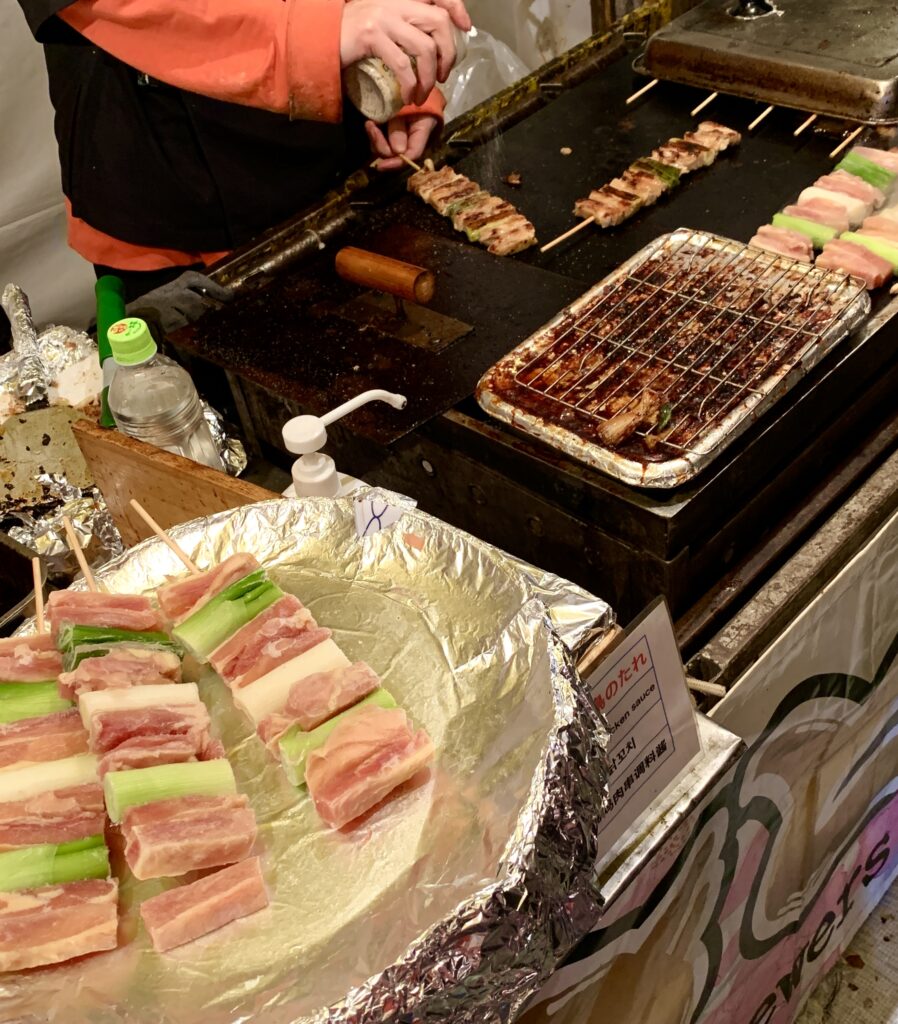
Everything about this snack is a choking hazard, but every adventure comes with its risks.
Dubbed “the kitchen of Japan,” there is no better city to explore street food than Osaka. You can find Osaka’s iconic creations, takoyaki and okonomiyaki, throughout Dotonbori, the tourist destination that is a safe bet for neon lights and food stalls. A fresh takoyaki is crispy on the outside, gooey on the inside, and absolutely piping hot (lesson learned after popping them in my mouth whole). The takoyaki sauce, kewpie mayonnaise, and aonori are beautifully slathered on, and you’ll be eager to capture a photo until—oh wait—they just smothered on a handful of bonito flakes, burying everything under an umami mass. But the flakes are delicious, so just let them steal the spotlight.
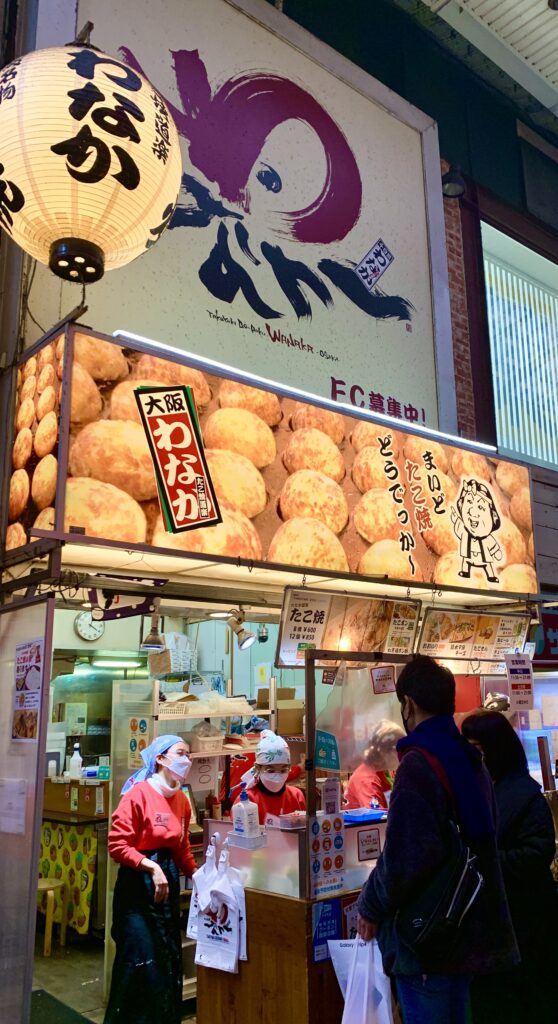
One of the first few thoughts that popped in my mind as I navigated through the Osaka airport was, “Why is there such a long line for steamed buns?” 551 Horai is a store chain established in 1945 that specializes in butaman, or pork buns, among other Chinese-inspired dishes. I encountered another shop a few days later and lined right up to order three buns for me, myself, and I. Admittedly, having grown up pampered by the homemade meat buns freshly steamed in my grandmother’s kitchen in China, I can only give these points for nostalgia. There is quite a generous glob of meat filling, but the bun itself is a bit too sweet and chewy for my liking. For the sake of adventure, I’d still give it a fair trial!
What better way to wrap up Osaka than with a fluffy Japanese cheesecake? Even before coming to Japan, I saw videos of these jiggly masses being packed into boxes straight from the oven. Now, this is the type of cultural exchange we want. Each customer lined up at the renowned Rikuro Ojisan shop can usually score a fresh one because a tray sells out within minutes of being pulled from the oven. Their classic cheesecake is sprinkled with raisins and has a mouthfeel matching its appearance: soft, light, airy, steamy, fluffy. The lightest tinge of cheesiness and sweetness makes it a delicate snack that is perfectly shareable with one other person—any more and you might be fighting over slices.
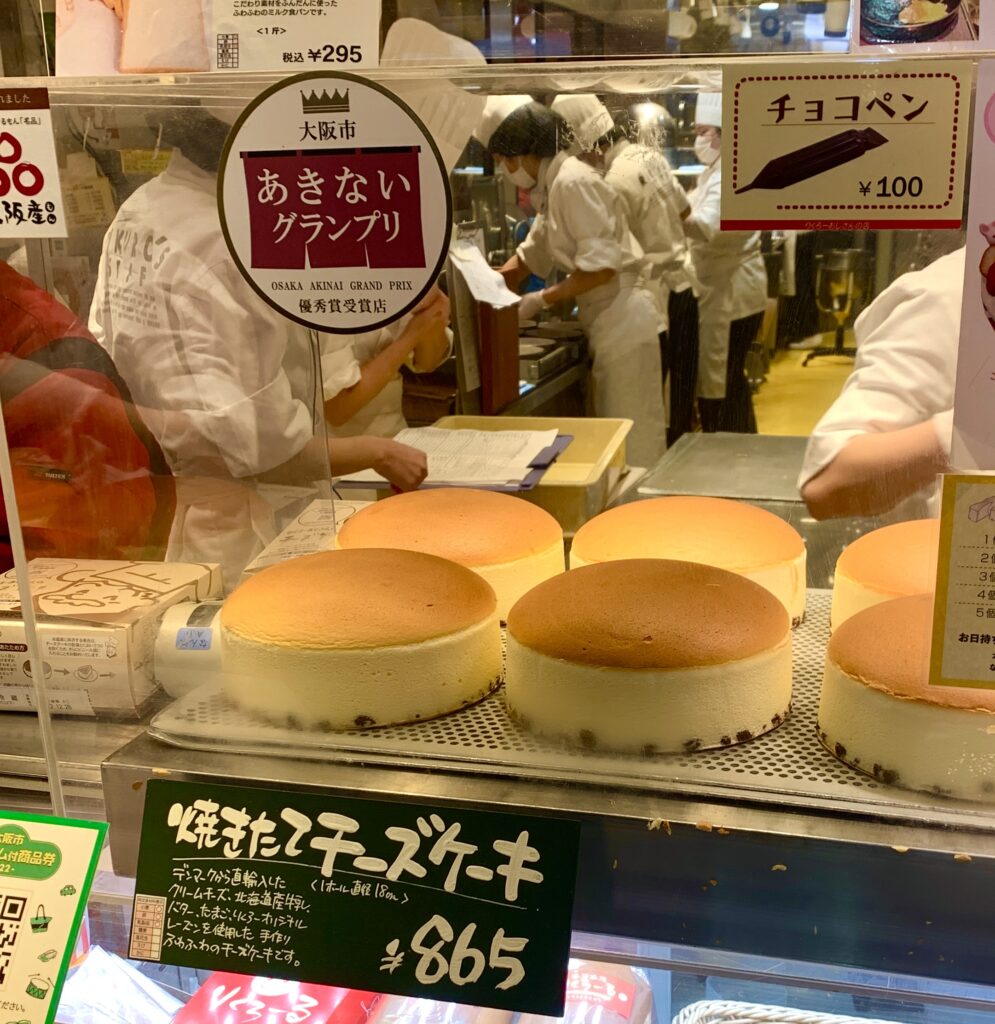
The street food scene in larger cities is prevalent year-round, but just like a fireworks show, it feels more invigorating paired with a festive holiday. Whether you visit Osaka for winter illuminations or Kyoto for temples, you’ll find that many areas during Christmas and New Year’s will have crowded streets and busy vendors. When I toured Kyoto and Nara around that time, the temples were jam-packed and stripped of their usual serenity.

These so-called holy night markets offered karaage fresh out of the fryer, oden selections stewing in a shallow pot, yakisoba tossed on a sizzling griddle, juicy octopus skewers, and so much more. What caught my eye was the longest line at a shop selling packs of mini coin biscuits made fresh using a sweet egg batter. They even displayed their day’s worth of eggshells in a massive crate. Hopping on the bandwagon, I lined up and watched the squad skillfully pour batter, rotate the grill, pop out biscuits, and shovel them into paper bags. Warm, crispy, and cakey, this finger food reminded me of Hong Kong’s egg waffles: both beautifully accentuate the natural fragrance of eggs. After a night out, my friend had to use the restroom at the subway station, and that’s what fatefully led me to discover the mochi stand set up next to the rest area. Discounted specifically for New Year’s, the assortment had almost every fruity and creamy flavor imaginable. Two minutes before boarding time, he walked out of the restroom to see me shelling out paper bills as the worker packed my selections into a dainty gift box. With my new possession in hand, we scurried to our ride just in time.

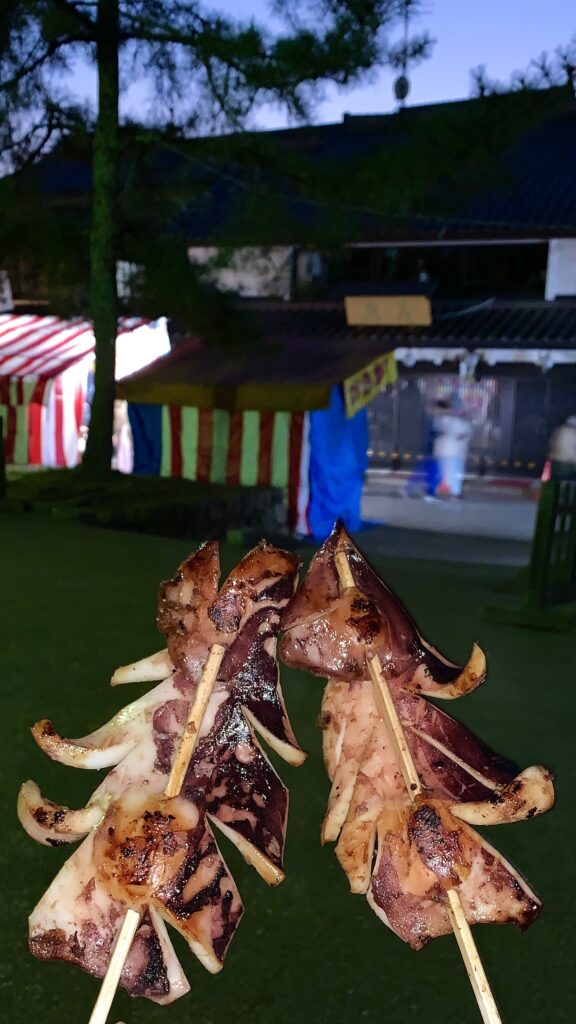

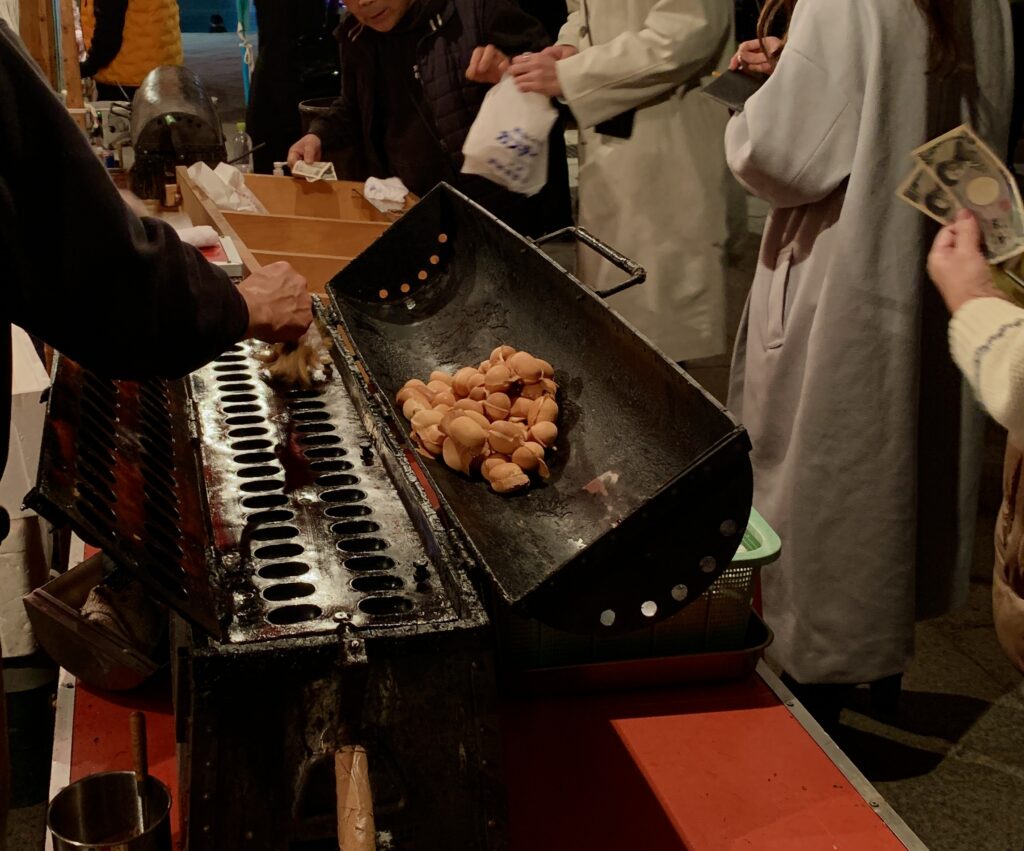
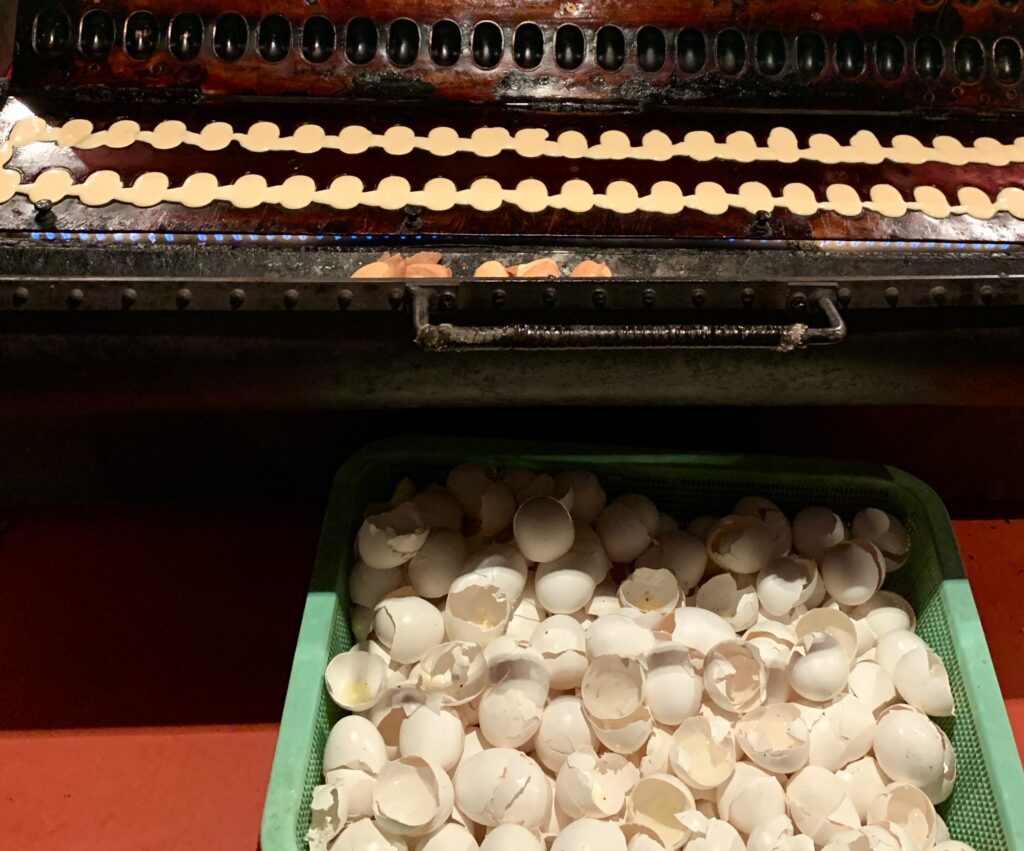

The perfect way to end the night—and this article—of food adventures is no other than my childhood favorite: candied fruit. Restricted to a colder temperature that keeps the sugar coating from melting, this winter delicacy leaves me craving its crunchy, fruity goodness throughout the rest of the year. Every first bite into a skewer transforms me back to the overdressed, stubby-legged toddler who struggled to fit an entire candied hawthorn into one bite and cried because the owner wasn’t kind enough to pit the fruit beforehand. Everything about this snack is a choking hazard, but every adventure comes with its risks. Almost every cluster of food stalls had one displaying grapes and strawberries coated with red-colored syrup. Because fruit is so painfully expensive here, each skewer only has about two to three pieces, leaving me always yearning for more the next day. This explains why every night market adventure had me eagle-eyeing kiddos with candied skewers and making a beeline toward the direction they came from.
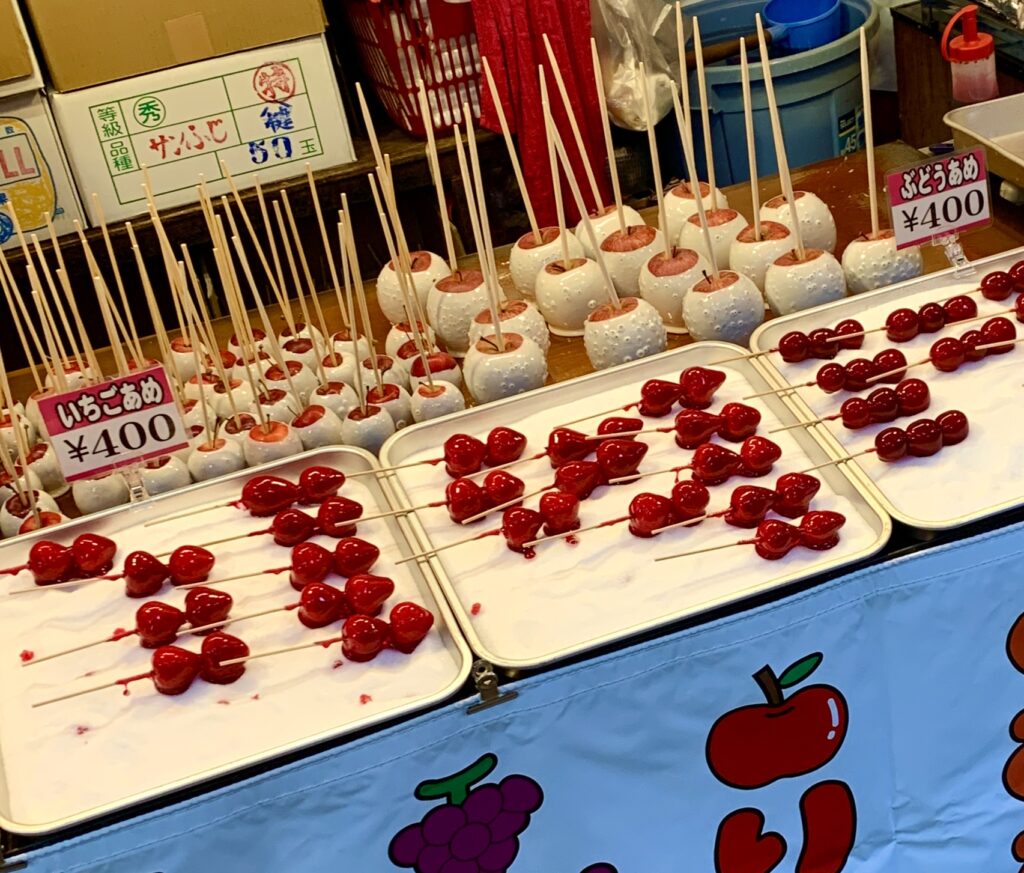
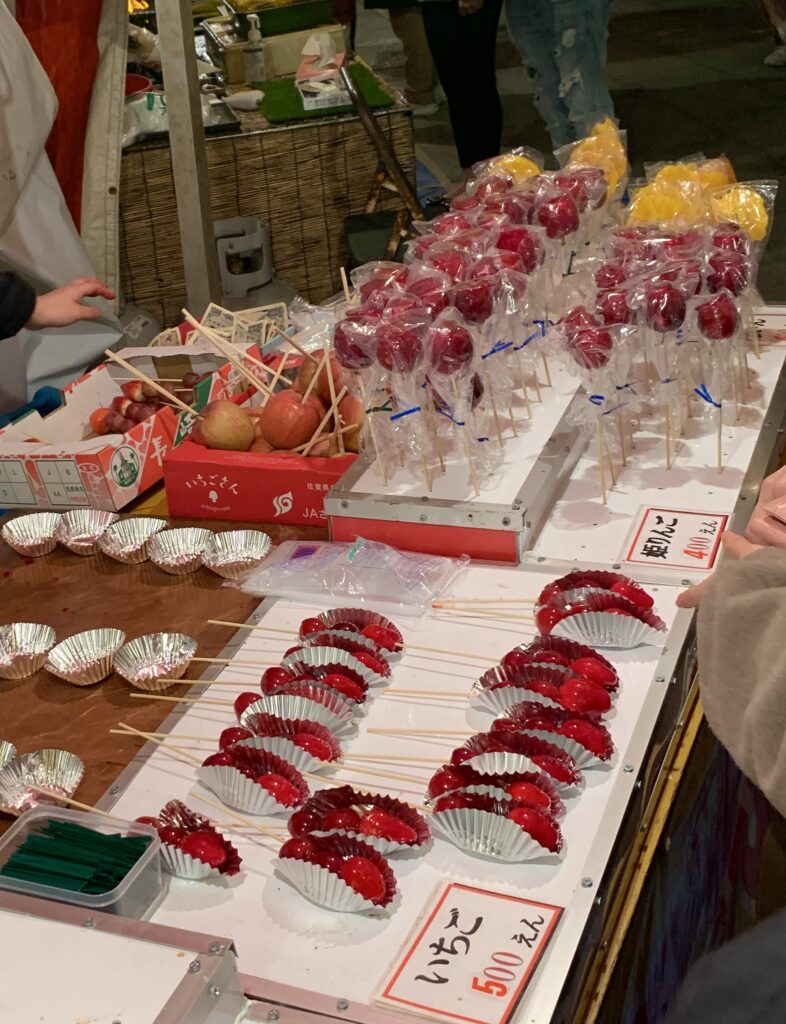
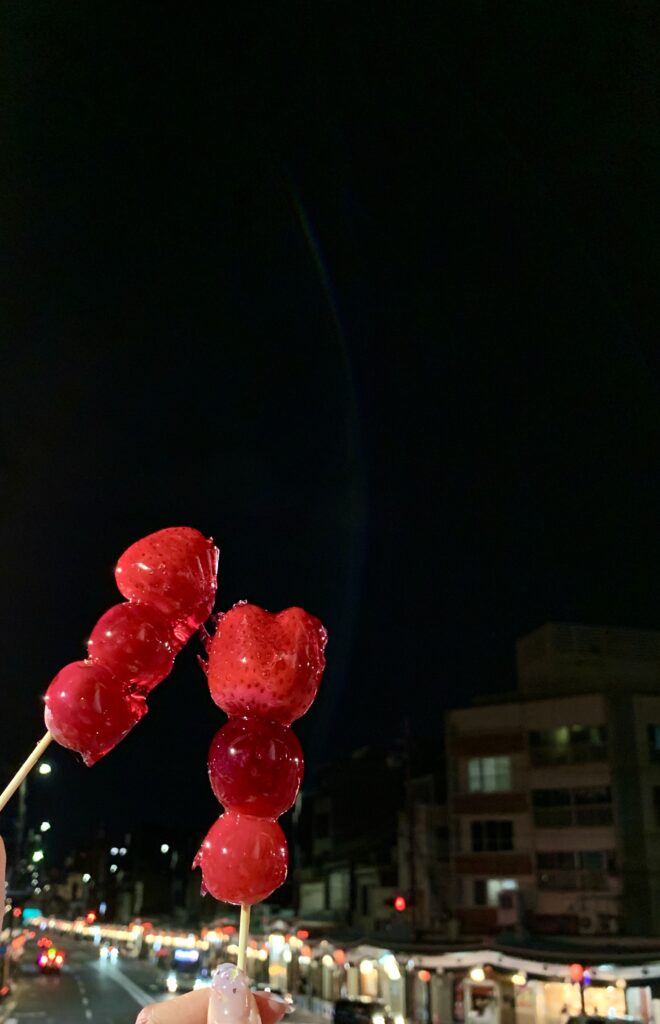
Every culture has its own version of street cuisine, nightlife, and social gathering. We can go into atomic detail about the food and drinks, but the atmosphere of street food is much harder to capture with words. An imbalance of cozy and chaotic, shivery cold and scorching hot, dimmed sky and fluorescent lights, crisp air and smoky flavors, bursting belly and ravenous curiosity; if it isn’t clear enough already, I’m enticing—no, demanding—you to dive into a street food adventure at your earliest convenience.
Ashley is a first-year JET in Ehime, occasionally nostalgic for her home in California. She enjoys creating and consuming literature, music, and film. She’s also a copy editor for CONNECT and loves reading everyone’s submissions!



![CONNECT ART ISSUE 2024 SUBMISSIONS [CLOSED]](https://connect.ajet.net/wp-content/uploads/2024/04/ARTISSUE-INSTA-600x500.png)





